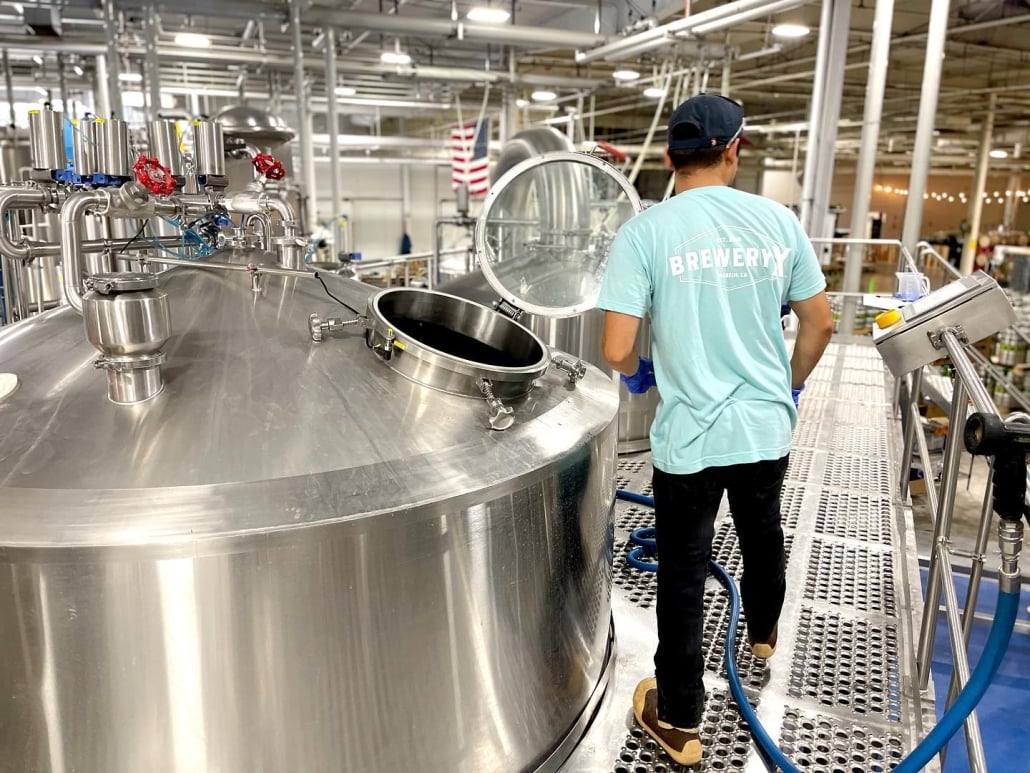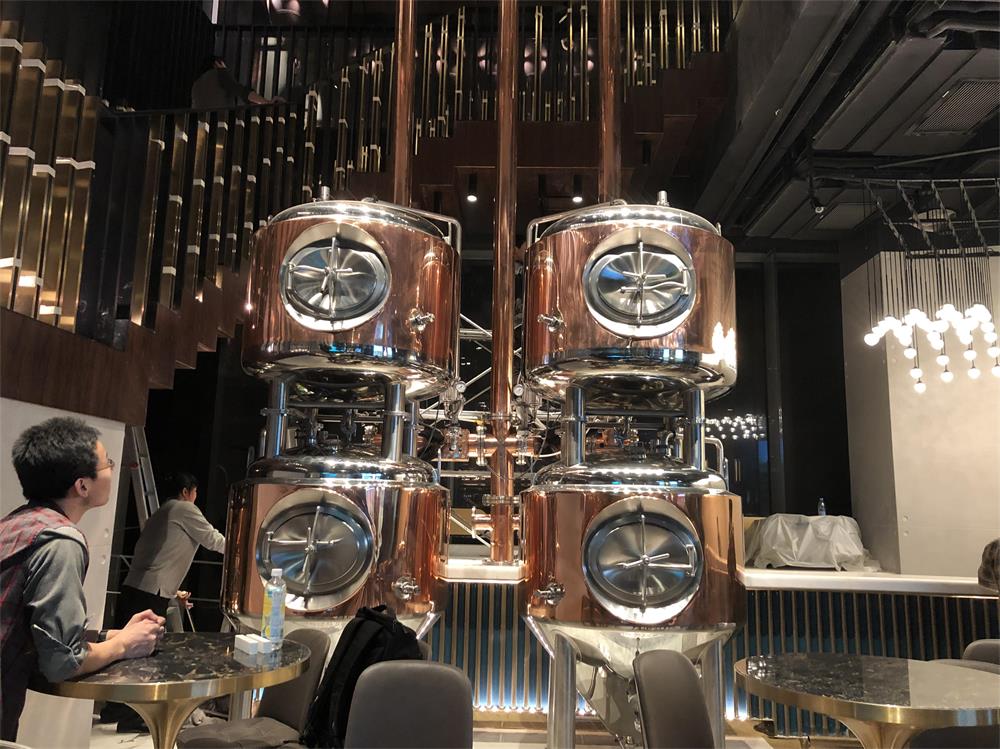The Ultimate Guide to Fermenter Equipment
Fermentation is a fascinating process, transforming basic ingredients into delightful beverages and foods through the magic of microorganisms. Whether you’re a seasoned brewer or just starting, having the right fermenter equipment is crucial. In this comprehensive guide, we’ll dive into everything you need to know about fermenter equipment, from types and processes to maintenance and choosing the best supplier.
Overview of Fermenter Equipment
Fermenter equipment is the heart of any brewing or fermentation operation. It includes vessels and accessories designed to create the optimal environment for microorganisms to convert sugars into alcohol or acids. Fermenter equipment varies in size, material, and complexity, making it suitable for home brewers to large-scale commercial operations.
Key Details
- Function: Provides a controlled environment for fermentation.
- Types: Vary based on scale, material, and functionality.
- Importance: Essential for maintaining product quality and consistency.
- Users: Home brewers, craft breweries, industrial manufacturers.

Types of Fermenter Equipment
| Type | Description | Best For |
|---|---|---|
| Plastic Fermenters | Lightweight and affordable, ideal for beginners. | Home brewers |
| Glass Fermenters | Non-reactive and easy to clean, offers visibility of fermentation. | Home brewers, small batch brewers |
| Stainless Steel Fermenters | Durable, easy to sanitize, and used in professional brewing. | Craft breweries, commercial brewers |
| Conical Fermenters | Allows for easy removal of yeast and trub, used in various scales. | All levels |
| Unitanks | Can be used for fermentation and conditioning, highly versatile. | Commercial brewers |
Brewing Process Overview
The brewing process, whether for beer, wine, or other fermented products, involves several key steps where fermenter equipment plays a critical role.
- Mashing: Converting starches to fermentable sugars.
- Boiling: Sterilizing the wort and adding hops.
- Fermentation: Yeast converts sugars into alcohol and CO2.
- Conditioning: Enhancing flavor and clarity.
- Packaging: Preparing the final product for consumption.
During fermentation, the choice of fermenter can impact temperature control, contamination risk, and overall ease of use.
Fermenter Equipment Features
When choosing fermenter equipment, consider these features to ensure it meets your needs:
| Feature | Description |
|---|---|
| Capacity | Ranges from 1 gallon for home use to thousands of gallons for commercial use. |
| Material | Plastic, glass, and stainless steel are common, each with pros and cons. |
| Design | Conical designs help with sediment separation. |
| Temperature Control | Essential for maintaining optimal fermentation conditions. |
| Ease of Cleaning | Smooth surfaces and minimal crevices are preferable. |
Supplier and Price Range
Selecting a reliable supplier is crucial for obtaining quality fermenter equipment. Here’s a look at some top suppliers and the typical price ranges.
| Supplier | Price Range | Specialty |
|---|---|---|
| MoreBeer! | $50 – $5000 | Home brewing kits to commercial equipment. |
| Blichmann Engineering | $200 – $10,000 | High-quality stainless steel fermenters. |
| Spike Brewing | $150 – $8,000 | Customizable conical fermenters. |
| Ss Brewtech | $100 – $7,500 | Innovative home and professional brewing solutions. |
Installation, Operation, and Maintenance
Proper installation and maintenance ensure your fermenter equipment functions optimally.
| Aspect | Details |
|---|---|
| Installation | Follow manufacturer guidelines, ensure proper sealing, and test for leaks. |
| Operation | Maintain cleanliness, monitor temperature, and ensure airtight seals. |
| Maintenance | Regularly clean and sanitize, inspect for wear, and replace gaskets as needed. |
Choosing the Right Supplier
Choosing the right supplier can be a game-changer. Here’s what to look for:
| Criteria | Details |
|---|---|
| Reputation | Check reviews and industry standing. |
| Customer Support | Availability of technical support and guidance. |
| Customization Options | Ability to tailor equipment to your needs. |
| Warranty | Coverage period and conditions. |
| Price | Balance between cost and quality. |
Pros and Cons of Different Fermenter Equipment
| Type | Advantages | Limitations |
|---|---|---|
| Plastic Fermenters | Affordable, lightweight, easy to handle. | Prone to scratches, can harbor bacteria. |
| Glass Fermenters | Non-reactive, clear visibility. | Fragile, heavier. |
| Stainless Steel Fermenters | Durable, easy to clean, professional quality. | More expensive, heavier. |
| Conical Fermenters | Easy yeast removal, versatile. | Higher initial cost, requires more space. |
Brewing Process with Detailed Insights
Understanding the brewing process in-depth can help optimize the use of your fermenter equipment.
- Mashing: This step involves mixing malted grains with hot water to break down complex starches into fermentable sugars. It’s crucial to maintain specific temperatures to activate enzymes effectively.
- Boiling: Post-mashing, the wort is boiled to sterilize it and dissolve hop resins, which add bitterness and aroma. Boiling also evaporates unwanted volatile compounds.
- Fermentation: The wort is cooled and transferred to a fermenter where yeast is added. Maintaining a consistent temperature is vital for yeast health and fermentation efficiency.
- Conditioning: After primary fermentation, the beer is conditioned to develop its flavor and carbonation. This stage can occur in the same fermenter or a secondary vessel.
- Packaging: Finally, the finished product is packaged in bottles, cans, or kegs. Proper sanitation and sealing are essential to maintain quality.
Customization and Design Options
| Aspect | Details |
|---|---|
| Capacity | Options range from small 1-gallon fermenters to large-scale industrial tanks. |
| Shape | Cylindrical, conical, and squat designs, each with specific benefits. |
| Material | Custom materials like plastic, glass, and stainless steel. |
| Features | Optional features like temperature control units, pressure relief valves, and sampling ports. |
Supplier and Price Range
| Supplier | Price Range | Specialty |
|---|---|---|
| MoreBeer! | $50 – $5000 | Home brewing kits to commercial equipment. |
| Blichmann Engineering | $200 – $10,000 | High-quality stainless steel fermenters. |
| Spike Brewing | $150 – $8,000 | Customizable conical fermenters. |
| Ss Brewtech | $100 – $7,500 | Innovative home and professional brewing solutions. |
Installation, Operation, Maintenance
| Aspect | Details |
|---|---|
| Installation | Follow manufacturer guidelines, ensure proper sealing, and test for leaks. |
| Operation | Maintain cleanliness, monitor temperature, and ensure airtight seals. |
| Maintenance | Regularly clean and sanitize, inspect for wear, and replace gaskets as needed. |
How to Choose the Right Supplier
| Criteria | Details |
|---|---|
| Reputation | Check reviews and industry standing. |
| Customer Support | Availability of technical support and guidance. |
| Customization Options | Ability to tailor equipment to your needs. |
| Warranty | Coverage period and conditions. |
| Price | Balance between cost and quality. |

Pros and Cons of Different Fermenter Equipment
| Type | Advantages | Limitations |
|---|---|---|
| Plastic Fermenters | Affordable, lightweight, easy to handle. | Prone to scratches, can harbor bacteria. |
| Glass Fermenters | Non-reactive, clear visibility. | Fragile, heavier. |
| Stainless Steel Fermenters | Durable, easy to clean, professional quality. | More expensive, heavier. |
| Conical Fermenters | Easy yeast removal, versatile. | Higher initial cost, requires more space. |
FAQ
| Question | Answer |
|---|---|
| What size fermenter do I need? | It depends on your brewing scale. Home brewers typically use 1-10 gallon fermenters, while commercial brewers may need 100+ gallon tanks. |
| Can I ferment in plastic containers? | Yes, but ensure they are food-grade and avoid scratching to prevent bacterial growth. |
| How do I clean a fermenter? | Use appropriate cleaning solutions, avoid abrasive materials, and sanitize thoroughly before each use. |
| What is the best material for a fermenter? | Stainless steel is preferred for its durability and ease of cleaning, but glass and plastic are also viable options for different needs. |
FAQ (Fermenter Equipment)
1) What’s the difference between a fermenter, brite tank, and unitank?
- Fermenter: for primary/secondary fermentation (often cone-bottomed).
- Brite tank: for maturation, clarification, and carbonation before packaging.
- Unitank: pressure-rated conical vessel that handles fermentation, conditioning, and carbonation in one.
2) How important is pressure rating on fermenter equipment?
If you plan to spund, naturally carbonate, or push transfers, choose pressure-rated vessels (e.g., 1–2 bar/15–30 psi for small scale). Non-rated vessels should not be pressurized.
3) Which temperature-control setup is best for small breweries?
Glycol-jacketed stainless conicals with individual solenoid valves and a central glycol chiller. For home/craft scale, a fridge/freezer with an inkbird-style controller or coil-in-bucket glycol loop works.
4) How do I size a glycol chiller for my fermenters?
Sum peak heat loads: ~65–85 W per liter of wort during peak fermentation for ales is a rough planning range, adjust for ambient temps and number of simultaneous active tanks. Add 20–30% safety margin.
5) What surface finish and weld quality should I request?
Internal Ra ≤ 0.8 μm, fully pickled/passivated stainless, ground and polished welds with no pits or crevices, and sanitary tri-clamp fittings to improve cleanability and reduce contamination risk.
2025 Industry Trends for Fermenter Equipment
- Sensor-first fermentation: Wider adoption of inline/dip DO, pH, gravity (tilt/pressure-based), and temperature arrays improves repeatability.
- Compact utilities: High-efficiency glycol chillers and variable-speed pumps reduce power draw; CO2 recovery grows among midsize producers.
- Hygiene upgrades: Rotary jet heads, validated CIP recipes, and electropolished internals shorten turnaround and lower chemical use.
- Pressure-capable unitanks at smaller scales: Affordable 1–3 bbl unitanks enable professional workflows for nanobreweries.
- Sustainability: Heat recovery from crash-cooling and water reuse in CIP cycles become standard specs.
2025 Benchmark Snapshot (US/EU; directional)
| Metric | 2023 Avg | 2025 Avg | Notes/Source |
|---|---|---|---|
| 1–2 bbl jacketed unitank (304 SS) | $2,800–$4,500 | $3,200–$4,900 | Added accessories/pressure rating |
| 7 bbl jacketed conical (60° cone) | $8,500–$12,000 | $9,500–$13,500 | Instrumentation upgrades |
| Small glycol chiller (1.5–3 tons) | $2,800–$5,500 | $3,200–$6,200 | Efficiency gains, higher costs |
| Inline DO probe (brew-grade) | $2,500–$5,000 | $2,300–$4,800 | Gradual price softening |
| Water use per hL beer (cellar ops) | 2.5–4.0 hL | 2.0–3.5 hL | CIP optimization/reuse |
Sources:
- Brewers Association sustainability and benchmarking: https://www.brewersassociation.org
- Master Brewers Association technical resources: https://www.mbaa.com
- Vendor catalogs and 2024–2025 market data (Ss Brewtech, Spike, Blichmann, ProBrewer classifieds): https://www.probrewer.com
- U.S. EIA (utilities context): https://www.eia.gov
Latest Research Cases
Case Study 1: DO-Driven Transfers Reduce Staling (2025)
Background: A small craft brewery saw rapid flavor fade and higher SO2 consumption post-packaging.
Solution: Added inline DO sensors at fermenter racking and brite tank fill, CO2-purged hoses, and fully closed transfers.
Results: DO at transfer dropped from 120–180 ppb to 30–60 ppb; sensory stability improved at 90 days, and average SO2 additions decreased by ~10%.
Case Study 2: CIP Optimization for Electropolished Conicals (2024)
Background: Lengthy CIP cycles and high chemical use on 10 bbl fermenters.
Solution: Retrofitted rotary jet heads, validated shorter alkaline and acid cycles via conductivity endpoints, and standardized 60–70°C recirculation.
Results: CIP time reduced by 22–28%; water/chemical consumption lowered by ~20%, with zero increase in ATP fail rates.
Expert Opinions
- John Mallett, Brewing Operations Expert and author of “Malt”:
“Great fermentation starts with clean, temperature-stable vessels. Invest in sanitary design, reliable cooling, and accurate measurement before adding capacity.” - Mary Pellettieri, QA Consultant and author of “Quality Management: Essential Planning for Breweries”:
“Track what matters: temperature profiles, gravity drop, pH, and oxygen at each transfer. Data-driven cellars avoid the most common off-flavor pitfalls.” - Ashton Lewis, Technical Brewing Educator (MBAA):
“Unitanks unlock professional workflows at small scales—yeast harvest, diacetyl rests, spunding, and carb-in-tank—without extra vessels.”
Practical Tools/Resources
- Brewers Association: cellar and sustainability guides: https://www.brewersassociation.org
- MBAA Technical Quarterly (fermentation/CIP): https://www.mbaa.com
- ProBrewer calculators and forums (chiller sizing, tank selection): https://www.probrewer.com
- Bru’n Water (mash/fermentation pH planning): https://www.brunwater.com
- Hamilton and Anton Paar (DO, density/alcohol measurement): https://www.hamiltoncompany.com | https://www.anton-paar.com
- Hygiena ATP testing (sanitation validation): https://www.hygiena.com
Optimization tip: Internally link to “unitank vs. brite tank,” “glycol chiller sizing for fermenters,” and “closed transfers and low‑O2 practices” to deepen topical relevance for Fermenter Equipment.
Last updated: 2025-09-09
Changelog: Added 5 FAQs, 2025 benchmark table with pricing/utilities context, two case studies (DO control and CIP optimization), expert insights, and practical resources for Fermenter Equipment
Next review date & triggers: 2026-03-01 or earlier if equipment pricing shifts >10%, new BA/MBAA guidance on cellar DO/CIP is released, or sensor pricing/availability changes significantly
Share this entry
Interested in learning more about Brewing Systems including additional details and pricing information? Please use the form below to contact us!
YOLONG BREWERY EQUIPMENT FAQS
- Commercial Brewery / Craft Brewery / Microbrewery / Nanobrewery
- What is The Difference Between Craft Beer and Industrial Beer?
- The Bespoke Differences In Custom Brewing Systems
- Everything You Need to Know About Kettle Souring
- How to Choose Brewing Equipment for Your business?
- How To Choose The-Best Partner To Build Your Commercial Microbrewing System?
- Two Detection Sensors That You Need To Use In Your Brewhouse System
- Remote Control Applications in Brewing Equipment/How does it work?
- How To Clean Your Brand New Brewery Tanks?

